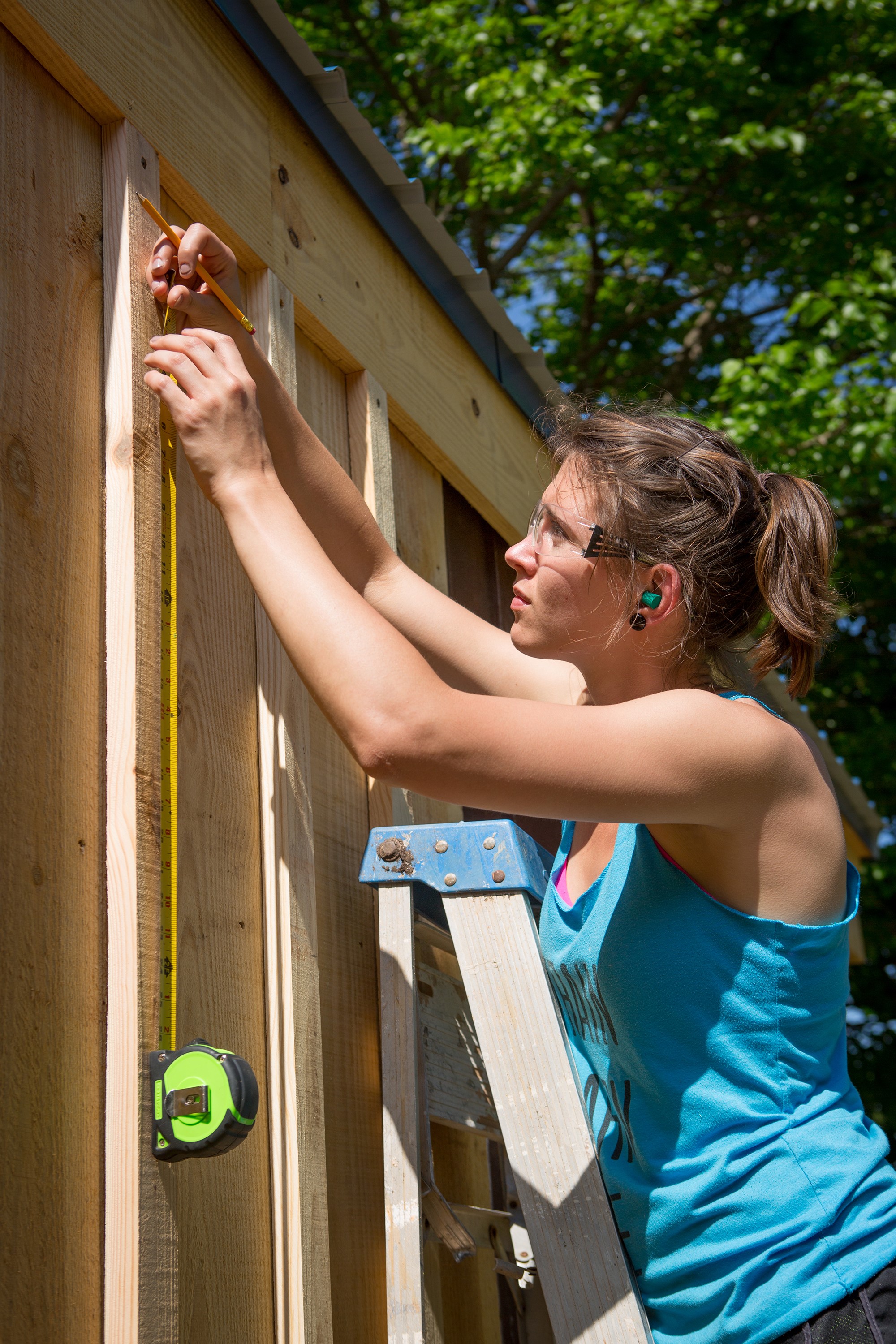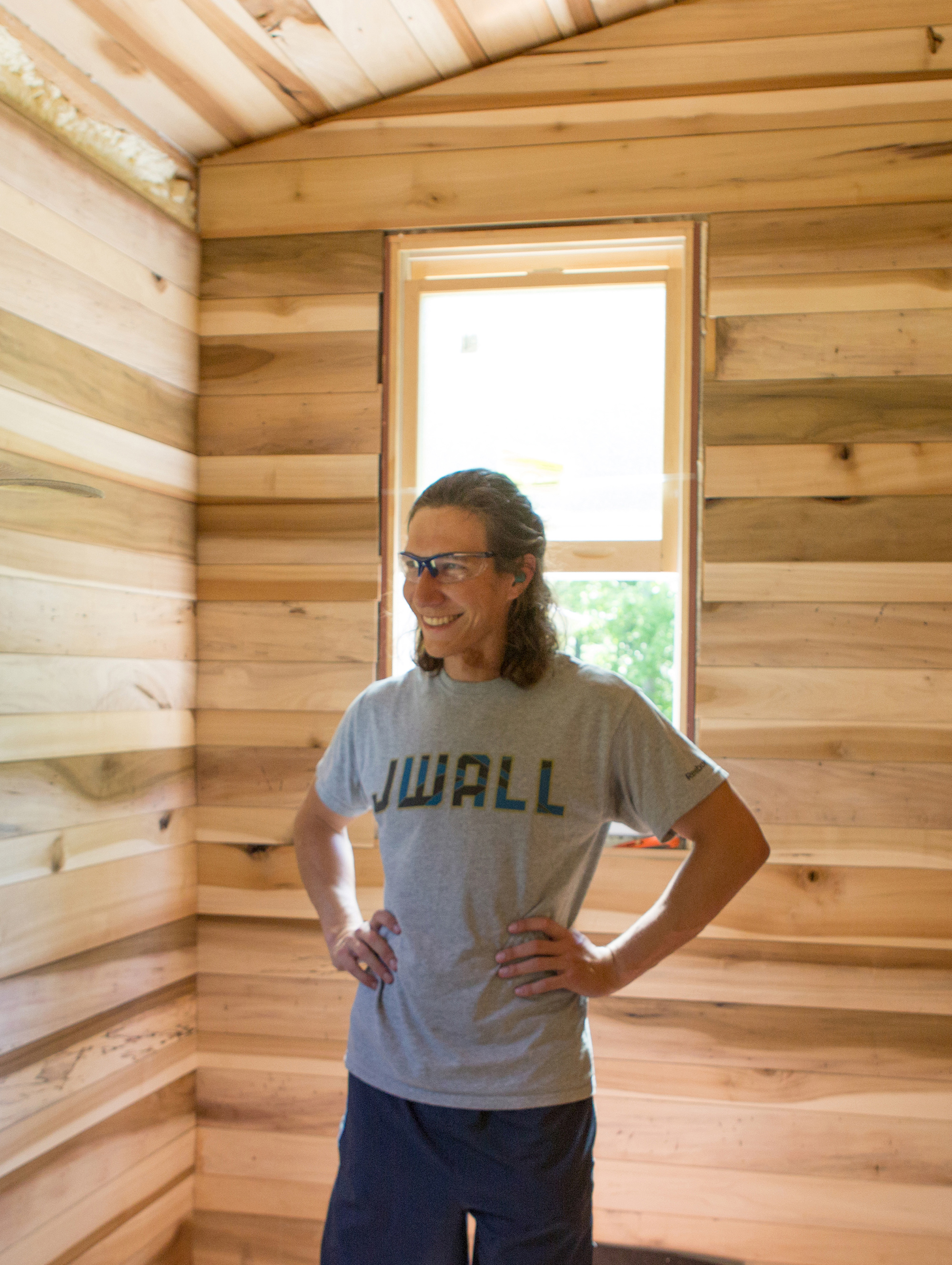In Their Own Words: Graduate Students on the Tiny House/Service Learning Experience
A large number of Skobba and Berle’s students are studying landscape architecture. Also, many are as attracted to the idea of building a home as potentially living in one. Here are student observations after having built a tiny house during this year’s spring semester.
Danielle Schwartz:

Photo Courtesy of Melissa Tufts
Working on the tiny house this semester has exposed me to new materials, people, and ideas that have in some ways reinforced my personal philosophies about material culture in America, but in other ways I’ve learned to think more critically and be reflective of where my feelings are coming from before I pass judgement.
Before starting this class, I told my mom “Don’t ever let me become one of those people who buys a 4,000 square foot mansion and needs to buy things to keep the place from feeling empty.” I thought this lifestyle was outrageous and completely disregarded any care for sustainability. And though I still have a hard time justifying living in 4,000 sq. ft., size is really relative. The 500 sq. ft. apartment I live in is five times the room that someone living in a 100 sq. ft. tiny house may have. And they could be thinking about me, “What does she need all that stuff for?!”
Living a simpler or more “green” lifestyle takes on different forms for different people. Everyone is on their own journey. While I do maintain my beliefs that living with less things, spending more energy on doing versus having, and building relationships with people rather than stuff could lead to a more meaningful and happy life, people live out even these tenants in their own ways. I’m grateful that this class has exposed me to more people who care about leaving this world better than they found it and who inspire me by showing me what it means for them to live intentionally and with a smaller carbon footprint.
Catherine Marie Sauer:
This experience has reinforced my beliefs that as a culture we place too much emphasis on consumption of both space and goods. I think Americans have this concept of space as limitless and that we can always expand and grow, “head west” so to speak. But we have reached a point where that outlook is unsustainable and wasteful. But I believe that through thoughtful and intentional design we can create space for everyone and live more lightly on the land and its resources. Working on this tiny house and learning more about the movement has inspired me to think more about alternative housing and how as planners we need to be proactive and open minded to how we can accommodate a growing population in a shrinking economy. It seems the spirit is there, and people are willing to try new things, but policy has not moved fast enough to allow it.
Rance Paxton:

The tiny house course has made me reconsider the attributes I want in my future home. I value quality over quantity even more. As most consumers, my decisions are influenced by prices and keeping costs low. By learning more about tiny houses and tiny living I realized there is great potential to reduce costs in my housing. A significant amount of space can be eliminated or reduced when you think of the costs to maintain the space. I hope more people consider this when building a new house. Even when you can afford more square feet doesn’t mean you need it.
It’s been great to learn hands on. I feel much more comfortable with tools and have the confidence to try my own home repairs before calling a professional. I think it’s a great skill that everyone would benefit from. It’s also great to be in a setting where everyone is on the same skill level. There is no pressure and everyone is learning together. It has been cool to see everyone improve over the semester.
For Further Reading:








